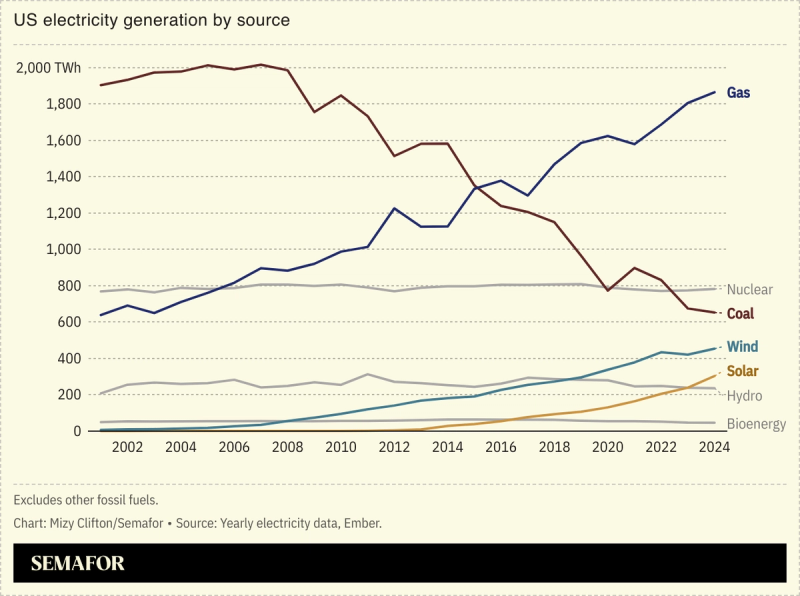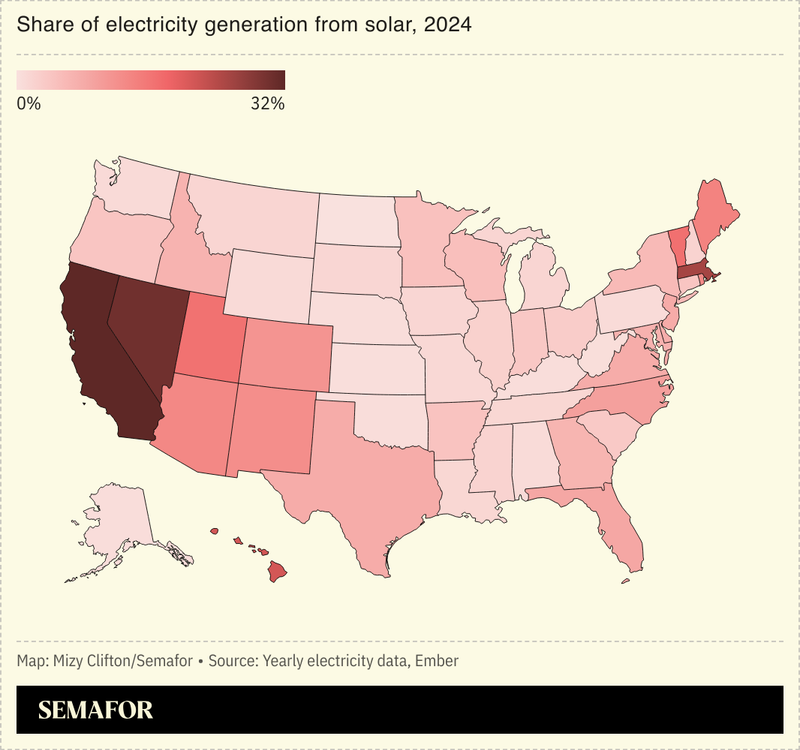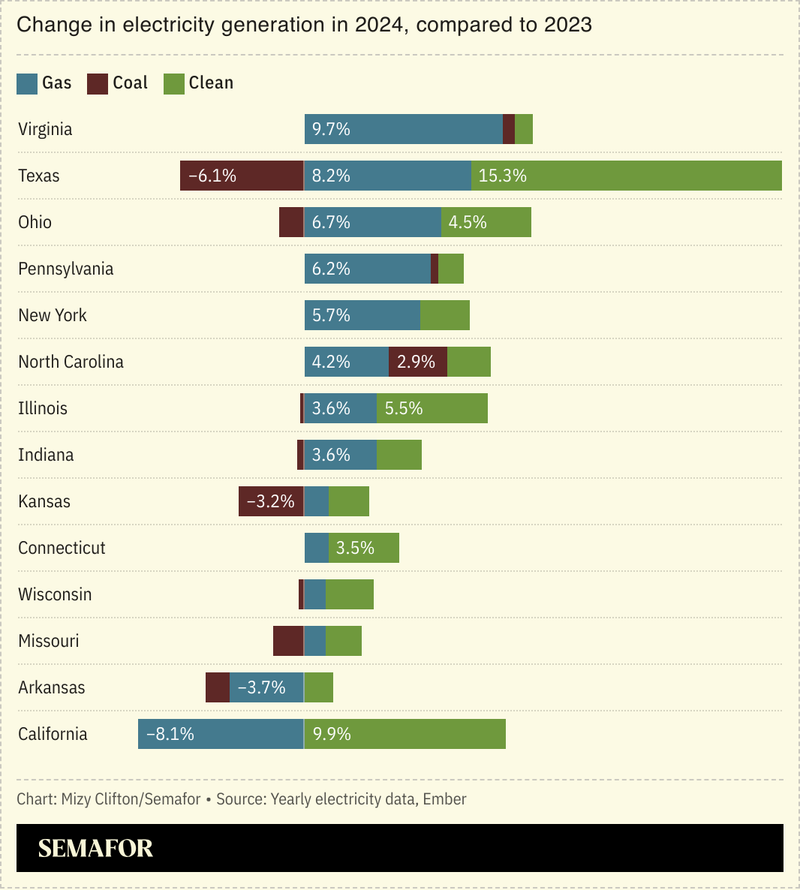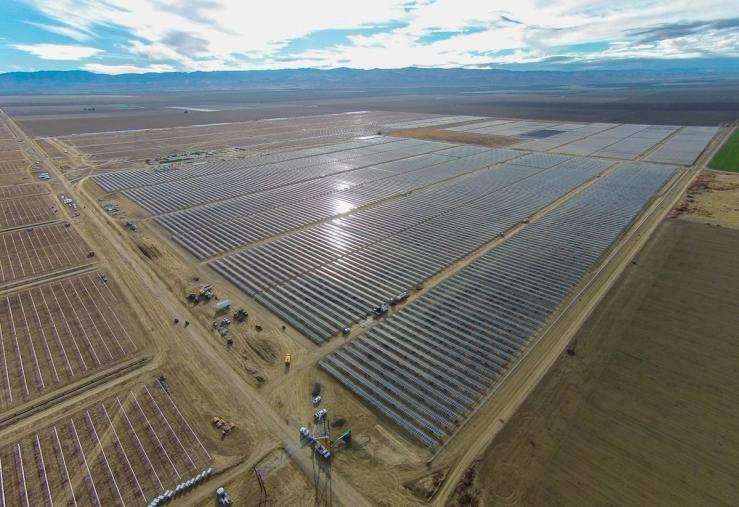The News
Wind and solar together produced a record 17% of US electricity last year, overtaking coal for the first time, a new Ember review found.

Solar consolidated its status as the country’s fastest-growing energy source, accounting for 81% of all new annual capacity additions. Wind, by contrast, is lagging behind — only 5.1 gigawatts were installed in 2024, the least new capacity in a decade — meaning it’s a two-horse race between solar and gas to meet the country’s electricity demand, now firmly rising after nearly 14 years of stagnation.
Solar appears to be winning, but the map is uneven: Major battery projects saw California and Nevada generate more than 30% of electricity from solar, significantly higher than the national average. North Dakota, for example, generated just 0.01% of its electricity from solar, with 27 other states also getting less than 5% of their electricity from solar.

Still, “California [and] Nevada are showing how quickly that could increase, if other states were really keen to step up,” said Dave Jones, Global Insights Programme Director at Ember and a co-author of the report.
The intrigue? Virginia, home to more than 500 AI data centers, witnessed the biggest year-on-year rise in gas generation out of any US state. “There’s a definite positive vibe that [fueling data centers] could and should be done with clean electricity, but that’s not necessarily how this is going to pan out,” Jones told Semafor.

But no additional gas capacity came online last year, and the industry is facing problems. The CEO of the US’ second largest gas producer EQT recently blamed rising consumer costs over the last four years on bottlenecks caused by a lack of available pipeline space following a series of project cancellations.
Know More
Nuclear generation increased slightly in 2024 but didn’t keep up with the overall electricity rise, so its share fell to the lowest this century. For all the hype around nuclear, especially small modular reactors — to which Energy Secretary Chris Wright this week said the Trump administration was likely to lend both financial and regulatory support — “the jury is still out” on how significant it might become in the long term, Jones said.
Tech companies in particular want to scale as quickly as possible, and nuclear remains expensive and time-consuming to build compared to gas: As a result, nuclear stocks are falling while gas continues its upward march, Semafor noted last week.
“In the shorter term, from now until 2030, you’re not going to see nuclear take a substantive step up,” Jones added.


